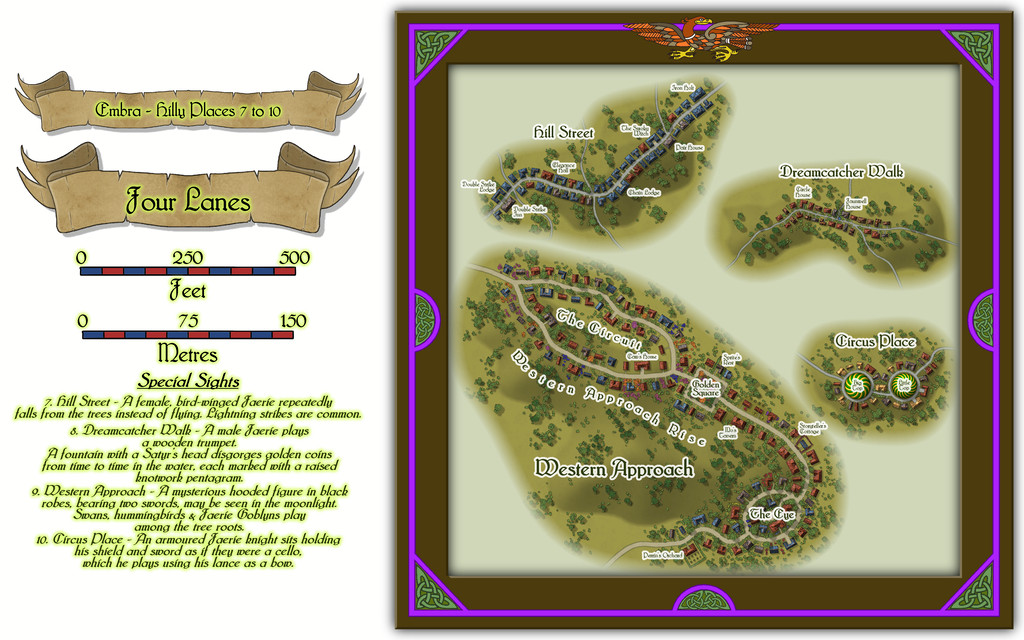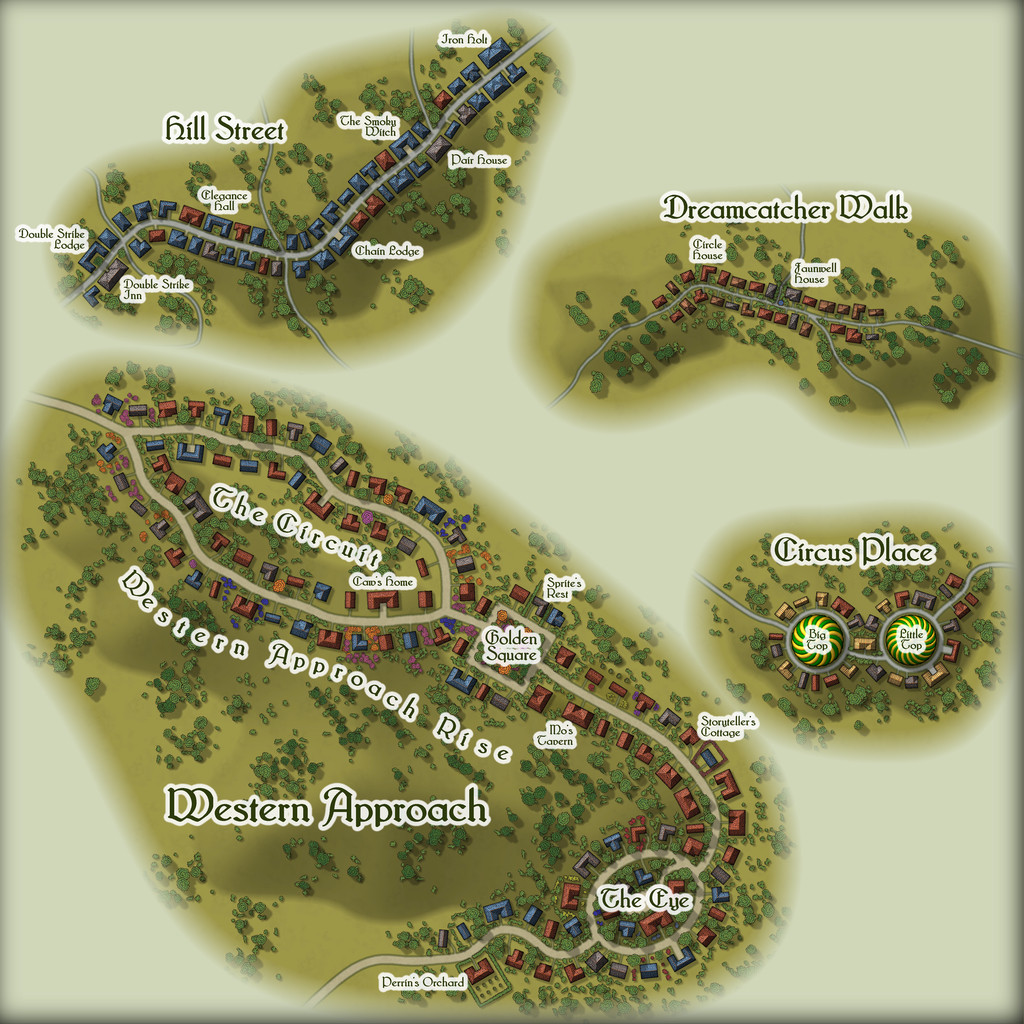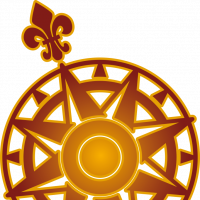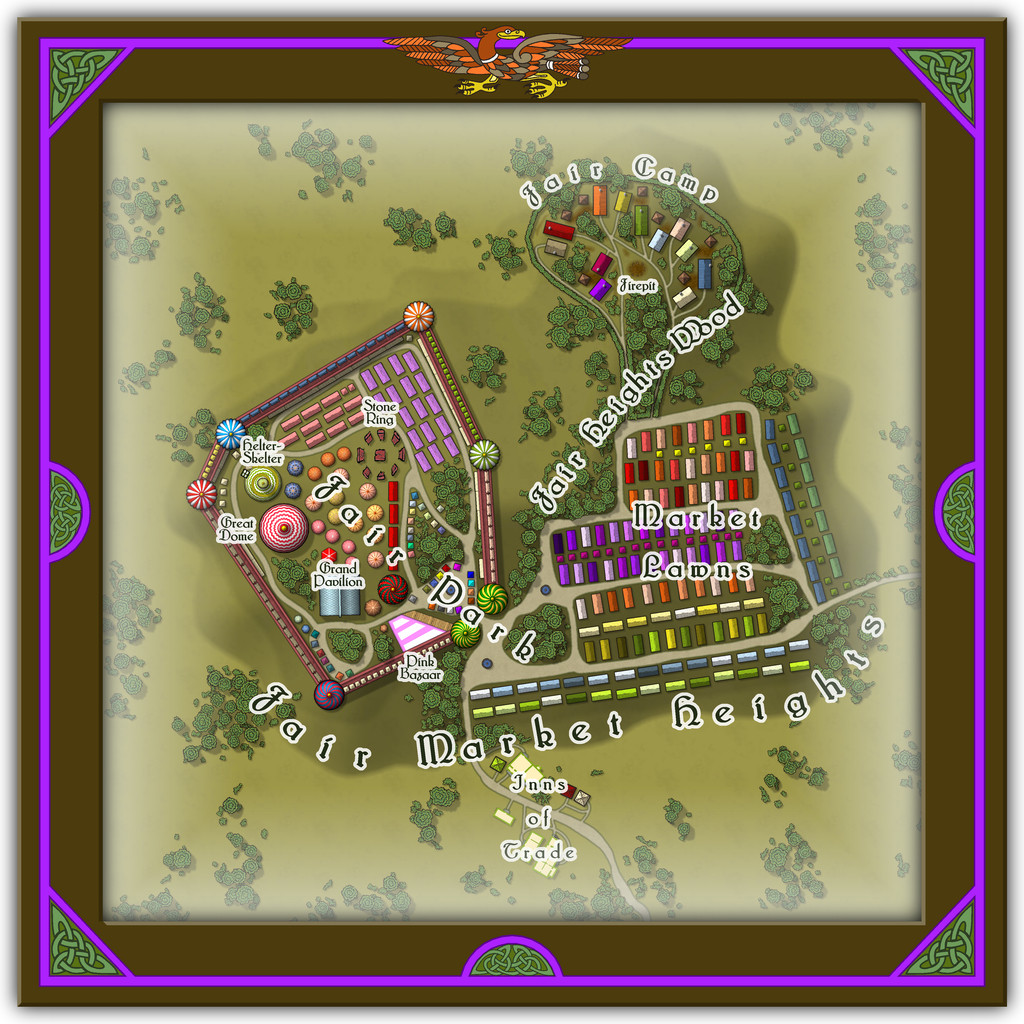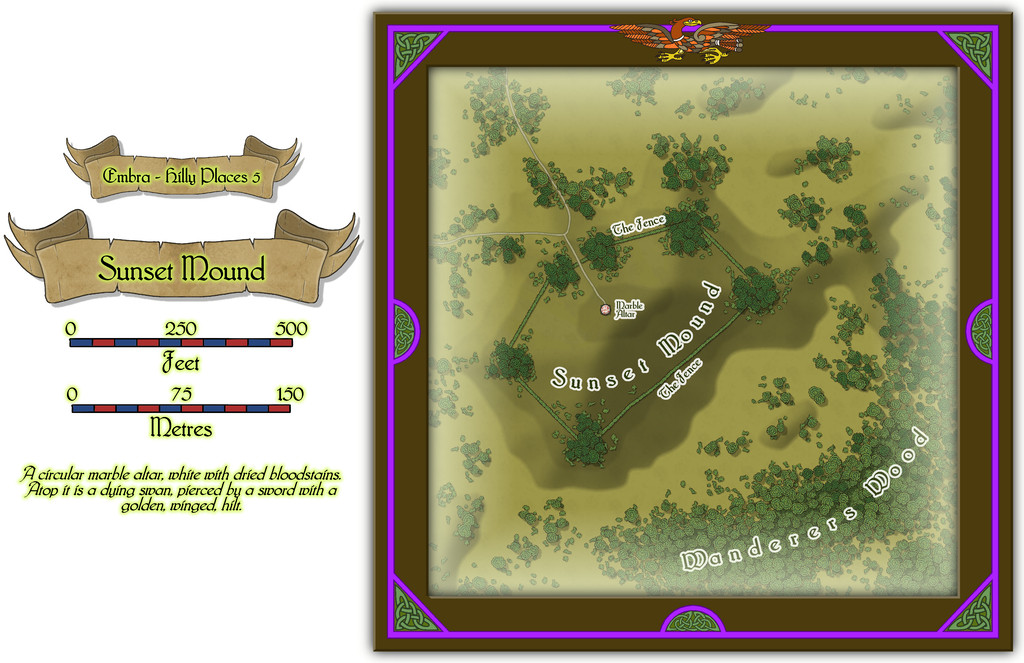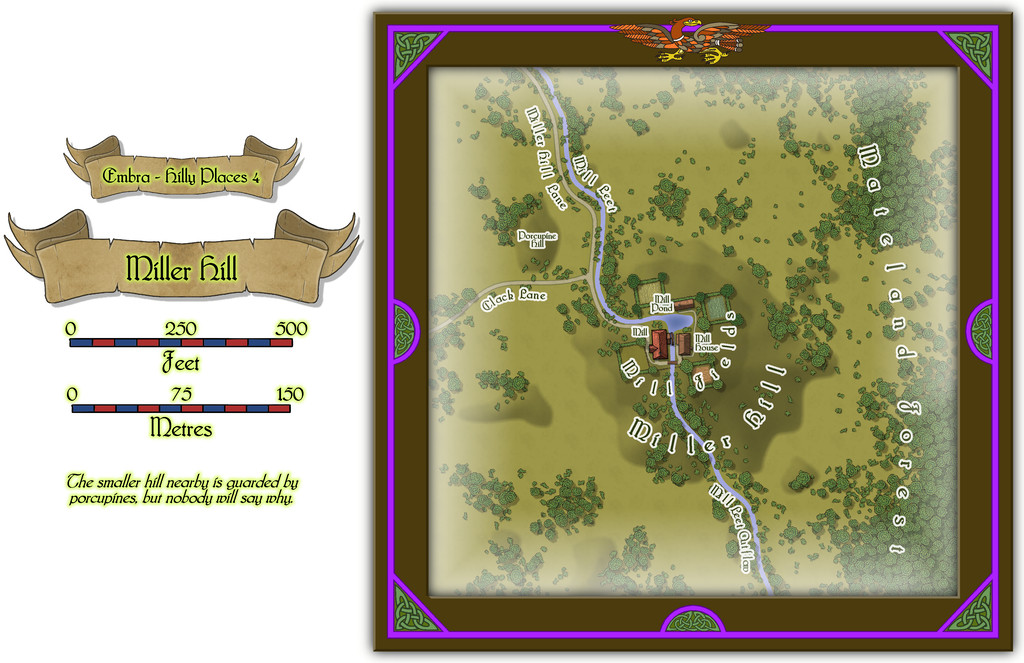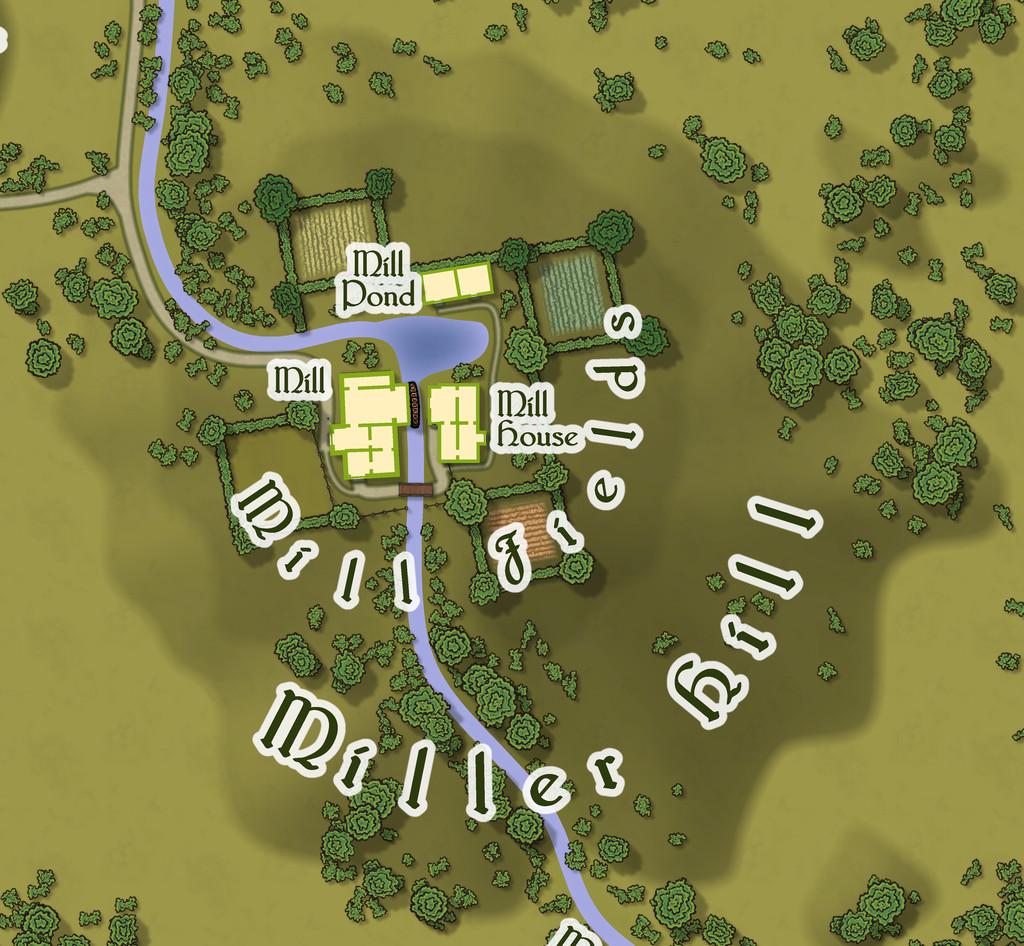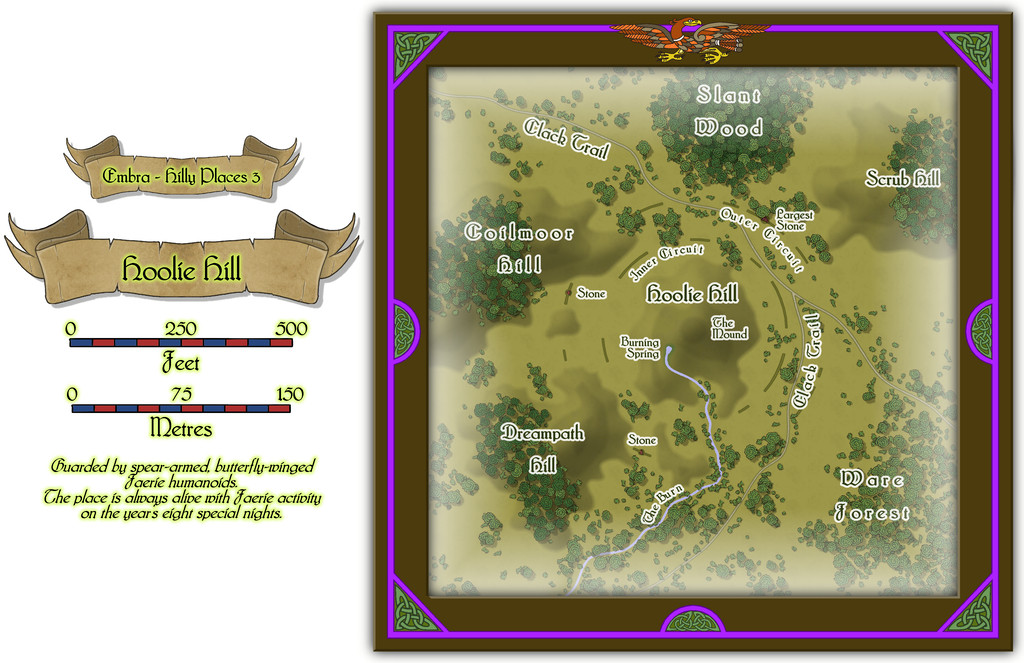
Wyvern
Wyvern
About
- Username
- Wyvern
- Joined
- Visits
- 3,151
- Last Active
- Roles
- Member
- Points
- 5,380
- Rank
- Cartographer
- Badges
- 24
-
Community Atlas: Embra - Hilly Places
The final Hilly Places map condenses the last four items, the streets, into one sketch:
These have a different random design mechanic behind them to the individual-place maps, and it became a particular fascination for me to see what patterns came out of this system. Here, I had to fit hills to the streets so-created, but that wasn't particularly difficult. Some features along the routes could be added based on the various featured texts, while others simply came from the street names, or the shapes the system produced, if sometimes with a bit of adjustment, or inspiration that struck while drawing them. Circus Place though just happened to look like a huge pair of spectacles from the outset - and what greater spectacle than a circus? Well, two circuses! Not saying it definitely did, but that might have influenced the final appearance of The Eye in Western Approach as well! Plus how apt was it that Western Approach can be approached only from the west? Sometimes, you start to wonder if randomness is truly "random" after all...
-
Community Atlas: Embra - Hilly Places
Last of the individual Hilly Places is the segment of the Twilight Market for this set, Fair Market:
The overall nature of this location was decided well in advance - a hilltop funfair and market, with a living-wagon camp nearby for the funfair folk and some of the traders. And another chance to play "spot the castle" as determined by the original base map! Here though, that allows the easy segregation of the funfair from the main part of the market, though there is a degree of mixing as well.
Most of the features are temporary structures, stalls, tents, etc. Even those "walls" are beautifully-crafted wooden lookalikes, with huge tents at the "turret corners", though stout enough to support an array of stalls built into the lower part of the walls, and more along the upper level's walkway. There is a handful of buildings too, in the Inns of Trade area south of the hill and market proper:
Those varicolor, chimneyless, long, wooden buildings, and the small, square ones, from the CA169 Fantasy Town Annual, are amazingly versatile, I've discovered. Change their sizes a little, and an entire array of market stalls appears as if by magic, especially once some of Sue's City Domes from CA144A are added to the mix for circular tents, stall roofs or awnings, including here for a theatre/performance venue (Great Dome) and a Helter-Skelter tower (with a couple of drawn additions), not to mention that square Grand Pavilion. And the wooden long-houses also work nicely as the living-caravans (with the addition of a drawn, little round chimney top for each), as well as more of the square buildings for the stores/privies alongside the vans in the Camp. Plus there are a few more oddities in the written information to go with this drawing, as normal.
-
Community Atlas: Embra - Hilly Places
Hilly map 5 is Sunset Mound, a rather more characterful hill than some in this set, looking a little like a fish with a small tail, the dominant upland in the area, with a swarm of much smaller, elongated hills clustering nearby:
While the shape for The Fence hedge-lines with its dense corner copses was largely determined by the base-map being a castle, most of the interior for that was ignored, replaced instead with a small focal-point derived from the map's accompanying featured text, that bloodstained Altar of the Dying Swan. Why such a huge, empty space surrounds it, is for GMs to expand upon.
-
Community Atlas: Embra - Hilly Places
Miller Hill as Place 4 seemed an obvious choice for a Hilly site. However, as stated already, y'know, Embra. So this is a water mill at the top of a hill, with a stream that runs uphill to the mill pond on the summit, runs the water wheel, and then descends down the other side of the hill again! Naturally, no one here thinks this is anything unusual - how could the mill run without a water source, is the primary response to those who might seek to question the setting:
There are some buildings on this map too, for once in the "Hilly" selection, which have interiors that can be viewed using the toggle in the FCW file in the Atlas, all being well:
It has to be said I was delighted to see the random base map options had provided one that so obviously fitted the nature of a mill site of this, shall we say unusual, kind - those four square fields looking like the sails on a windmill. So there's a note in the PDF and text files for this map suggesting GMs could have the four fields, and their hedge/fence lines, rotate, flowing over the land surface like cloth, carrying anyone in one of the fields along with them, but only when the wind blows strongly. Everything else of course stands quite still; and not entirely by chance, the rotation centres more or less on the axle of the mill-wheel, where else?
-
Community Atlas: Embra - Hilly Places
Map 3 in this set covers Hoolie Hill, yet another Edinburgh-influenced spot, as there is a real-world ancient site near Edinburgh called Huly Hill, which has a tumulus surrounded at a distance by three standing stones set on what seems to be a concentric ring (or perhaps two rings) centred on the burial mound. This though is Embra, so things have to be done a little differently, hence:
Thus similar, but not the same, and it is a particularly strong Faerie site. The base map used for this one also allowed scope for plenty of surrounding terrain features, so the Hill here isn't necessarily the most obvious feature for those unfamiliar, and trying to find it. The name, while a phonetic variant on the real-world one, was chosen as it can be thought to derive from the Scottish dialect term meaning "very windy", originating in a variant contraction of "howling (pronounced as "hoolin'") gale".



